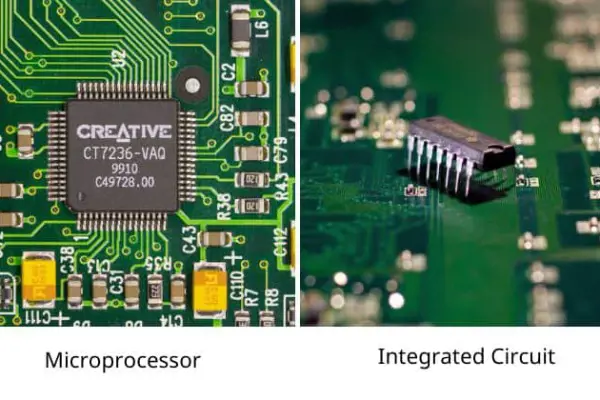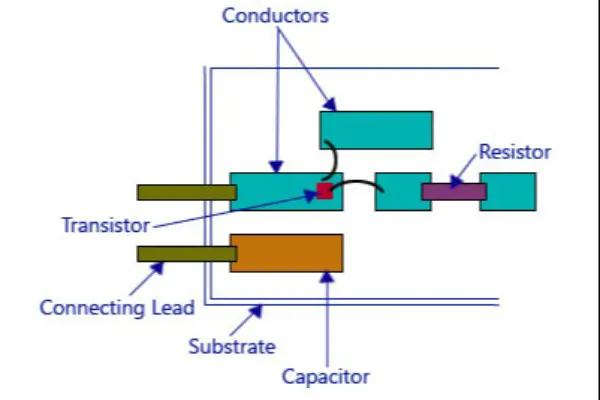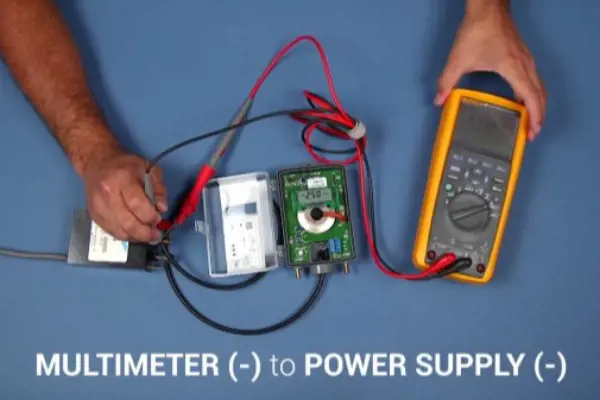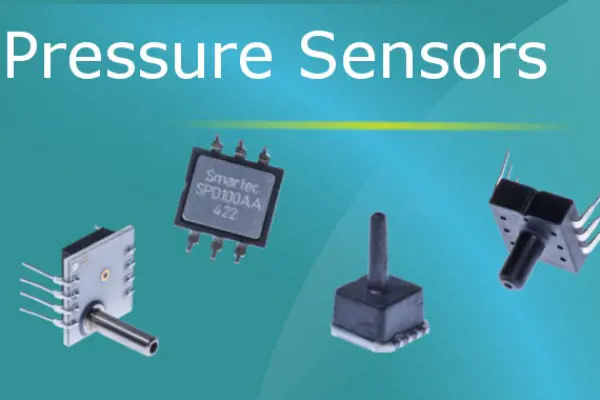Linear Displacement Transducer: Types, Working Principle and Application
 Published: Jul 12, 2023
Published: Jul 12, 2023
Contents
A linear displacement transducer, also known as a linear position sensor or linear encoder, is a crucial component in various industries and applications where precise measurement and control of linear motion are required.
In this article, we will explore the different types, working principles, and applications of linear displacement transducers and how to choose. Whether you are an engineer, a researcher, or an enthusiast in the field of motion control, understanding the capabilities and benefits of linear displacement transducers will empower you to make informed decisions when selecting the most suitable transducer for your specific needs.
What is Linear Displacement Transducer
A linear displacement transducer, also known as a linear displacement transducer or linear position transducer, is a type of sensor or measuring device used to accurately determine the linear position or displacement of an object. It converts linear motion into an electrical signal that can be used for various purposes, such as monitoring, control, or feedback in industrial and scientific applications.
Different Types of Linear Displacement Transducers (Example)
There are various types of linear displacement transducers available, each utilizing different technologies and principles to measure linear displacement. Here are some commonly used types:
1. Potentiometric Transducers: Potentiometric transducers, also known as linear potentiometers, use a resistive element and a sliding contact to measure linear displacement. The sliding contact moves along the resistive element, producing a change in resistance that corresponds to the position.
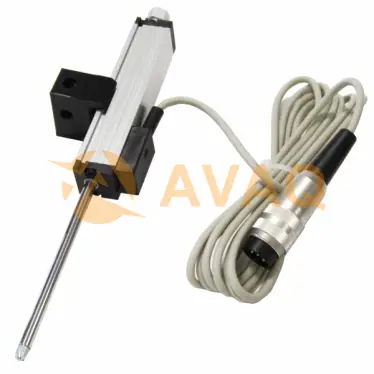
2. LVDT (Linear Variable Differential Transformer): LVDT transducers are based on electromagnetic induction. They consist of a primary coil and two secondary coils wound around a ferromagnetic core. The movement of the core due to linear displacement induces a differential voltage in the secondary coils, which is used to determine the position.
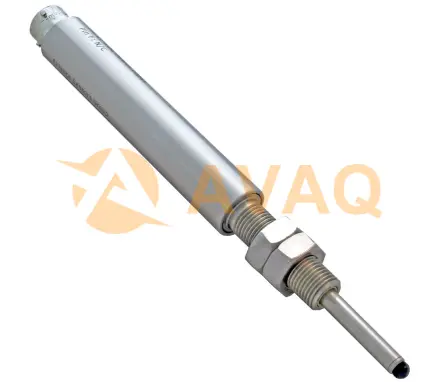
3. Magnetostrictive Transducers: Magnetostrictive transducers utilize the magnetostrictive effect, where a magnetostrictive wire generates ultrasonic waves that travel along the wire. The time it takes for the wave to reach a position is used to calculate the linear displacement.
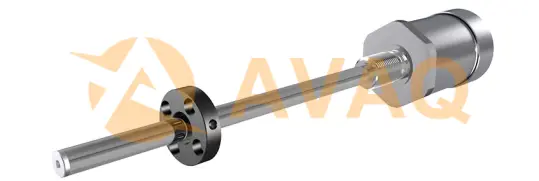
4. Capacitive Transducers: Capacitive transducers use changes in capacitance to measure linear displacement. They typically consist of two parallel plates, one fixed and one movable. The displacement alters the capacitance between the plates, which is then converted into a position measurement.
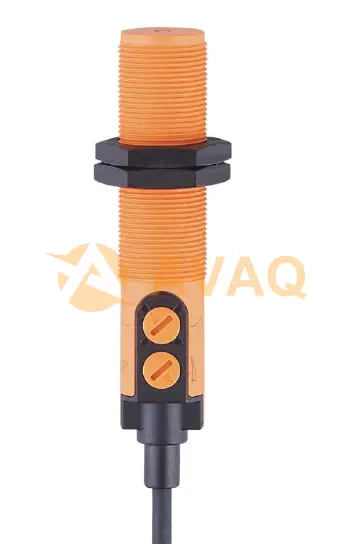
5. Optical Encoders: Optical encoders employ light-based technology to measure linear displacement. They consist of a light source, a scale with fine markings, and a photodetector. The movement of the scale interrupts the light path, and the photodetector converts this interruption into position information.
6. Eddy Current Transducers: Eddy current transducers utilize the principle of electromagnetic induction. They generate an alternating magnetic field that interacts with a conductive target. The position is determined by measuring the changes in impedance induced by the eddy currents in the target.
How Does a Linear Displacement Transducer Work
The specific working principle of a linear displacement transducer can vary depending on the type of transducer,
|
Transducer Type |
Working Principle |
|
Potentiometric |
Utilizes a resistive element and a sliding contact. The position of the sliding contact determines the resistance value, which is converted into an output signal proportional to the displacement. |
|
LVDT |
Based on electromagnetic induction. It consists of a primary coil and two secondary coils wound around a ferromagnetic core. The displacement of the core due to linear movement induces a differential output voltage used to determine the position. |
|
Magnetostrictive |
Relies on the magnetostrictive effect. A magnetostrictive wire or rod, often made of an iron-nickel alloy, generates ultrasonic waves that travel along the wire. The time it takes for the wave to travel back is used to calculate the linear displacement. |
|
Capacitive |
Measures displacement by changes in capacitance. Typically, it involves two parallel plates, one fixed and one movable. The displacement alters the capacitance between the plates, which is converted into an electrical signal representing the position. |
|
Optical Encoder |
Utilizes light-based technology. It consists of a light source, a scale with fine markings, and a photodetector. Interruptions in the light path caused by the object's movement are detected by the photodetector, enabling position determination. |
LVDT sensor working principle
Linear Displacement Transducer Application
|
Application Type |
Common Sensor Models |
Brand |
Characteristics |
|
Industrial Automation |
SICK DFS60, Balluff BTL7 |
SICK, Balluff |
High accuracy, wide measurement range, robust construction for industrial environments, compatibility with various control systems and protocols. |
|
Robotics |
Novotechnik LWG Series, RLS R-Series |
Novotechnik, RLS |
Compact size, high resolution, low friction, suitable for precise positioning and control in robotic systems. |
|
CNC Machines |
Heidenhain LS Series, Mitutoyo Linear Scales |
Heidenhain, Mitutoyo |
High accuracy, digital output, resistant to vibration and environmental factors, available in different lengths and mounting options. |
|
Material Handling |
Honeywell SMART Position Sensors, Turck Linear Position Sensors |
Honeywell, Turck |
Non-contact measurement, resistance to harsh environments, suitable for continuous monitoring and control in conveyor systems and material handling equipment. |
|
Medical Devices |
Micronas HAL Series, AMS AS5311 |
Micronas, AMS |
Miniature size, low power consumption, precise measurements for medical equipment such as infusion pumps, surgical robots, and patient positioning systems. |
|
Automotive |
Contelec Vert-X Series, MTS Temposonics Sensors |
Contelec, MTS |
High durability, resistance to shock and vibration, automotive-grade certifications, suitable for position control in throttle pedals, suspension systems, etc. |
Manufacturer of Linear Displacement Transducer
Here we will introduce the manufacturers and the representative models of linear displacement transducer,
🔺Balluff:
- BTL5 Series
- BTL7 Series
- BTL Magnetostrictive Linear Position Sensor
🔺Novotechnik:
- LWG Series
- LWH Series
- TLH Series
🔺Honeywell:
- SMART Position Sensors (SRS Series)
- Micro Switch HDLS Series
🔺SICK:
- DFS60 Incremental Encoder Series
- DML/E Distance Measurement Sensors
- LMS100/LMS111 Laser Measurement Sensors
🔺Turck:
- LRS Series
- LR Linear Position Sensors
- LTX Series
🔺Heidenhain:
- LS Series
- LIP Series
- RCN Series
🔺Micronas:
- HAL 15xy Series
- HAL 37xy Series
- HAL 8xy Series
🔺AMS:
- AS5311 Linear Position Sensor
- AS5410 Hall Effect Position Sensor
- AS5600 Magnetic Rotary Position Sensor
🔺MTS Sensors:
- Temposonics E-Series
- R-Series
- G-Series
🔺Positek:
- PIPS Series
- PL Series
- P101 Series
🔺RLS (Renishaw):
- RGH41 Series
- RLS-C Series
- RMB20 Series
How to Choose Linear Displacement Transducer
Choosing the right linear displacement transducer depends on several factors. Here are some key considerations to help guide your selection:
1) Measurement Range: Determine the range of linear displacement you need to measure. Ensure the transducer has a measurement range that covers your required distance.
2) Accuracy: Consider the level of accuracy required for your application. Different transducers offer varying levels of accuracy, so choose one that meets your precision requirements.
3) Resolution: Determine the smallest increment of displacement you need to measure. Transducers with higher resolution provide finer measurement increments.
4) Environmental Conditions: Assess the environmental conditions in which the transducer will operate. Consider factors such as temperature, humidity, vibration, and exposure to dust, chemicals, or moisture. Choose a transducer that is suitable for the specific environmental conditions.
5) Mounting and Integration: Consider the mechanical aspects, such as the mounting options and compatibility with your existing system or equipment. Ensure the transducer can be easily integrated into your setup.
6) Output Signal: Determine the type of output signal required for your application. Common options include analog voltage, analog current, digital (such as PWM or SSI), or serial communication. Ensure the transducer's output signal is compatible with your control or measurement system.
7) Reliability and Durability: Consider the reliability and durability of the transducer, especially if it will be subjected to harsh operating conditions or high levels of vibration. Look for robust construction and protection against environmental factors.
8) Cost: Evaluate your budget and consider the cost-effectiveness of different transducer options. Remember to balance cost with the required performance and features.
9) Application-specific Features: Depending on your application, you may need specific features such as non-contact measurement, intrinsic safety, compact size, or compatibility with certain protocols. Identify any application-specific requirements and ensure the chosen transducer meets those needs.
Conclusion
In conclusion, linear displacement transducers play a vital role in achieving precise measurement and control of linear motion in various industries and applications. Their ability to convert mechanical displacement into electrical signals enables real-time monitoring and accurate control, enhancing the performance and efficiency of linear motion systems. When selecting a linear displacement transducer, it is important to consider factors such as resolution, accuracy, operating range, and environmental conditions to ensure optimal performance.
Stay updated with the latest advancements in transducer technology, explore datasheets and technical documentation, and make informed choices when incorporating linear displacement transducers into your projects. Embrace the precision and reliability offered by these transducers, and unlock new possibilities in achieving precise linear motion control in your applications.
 FAQ
FAQ
- Can a linear displacement transducer be customized for specific applications?
- Yes, some manufacturers offer customization options for linear displacement transducers to meet specific application requirements. This may include customized measurement ranges, mounting options, electrical outputs, or environmental protection. It is recommended to discuss customization options with the manufacturer or supplier to determine feasibility and availability.
- Can linear displacement transducers provide analog or digital output?
- Linear displacement transducers can provide both analog and digital output signals, depending on the type and design of the transducer. Analog output transducers produce continuous voltage or current signals proportional to the displacement, while digital output transducers provide discrete digital signals representing specific positions or movements.
- Can linear displacement transducers be used in harsh environments?
- Some linear displacement transducers are specifically designed to withstand harsh environments. For example, certain transducers are sealed to protect against dust, moisture, or vibration. It is important to choose a transducer with appropriate environmental ratings and sealing for the specific application requirements.
 Popular Industry Focus
Popular Industry Focus
Hot Products
-

WMPR1A02A1A1
Honeywell Power Products - Life Safety
RF Receiver 2.4GHz 802.15.4 Ethernet
-
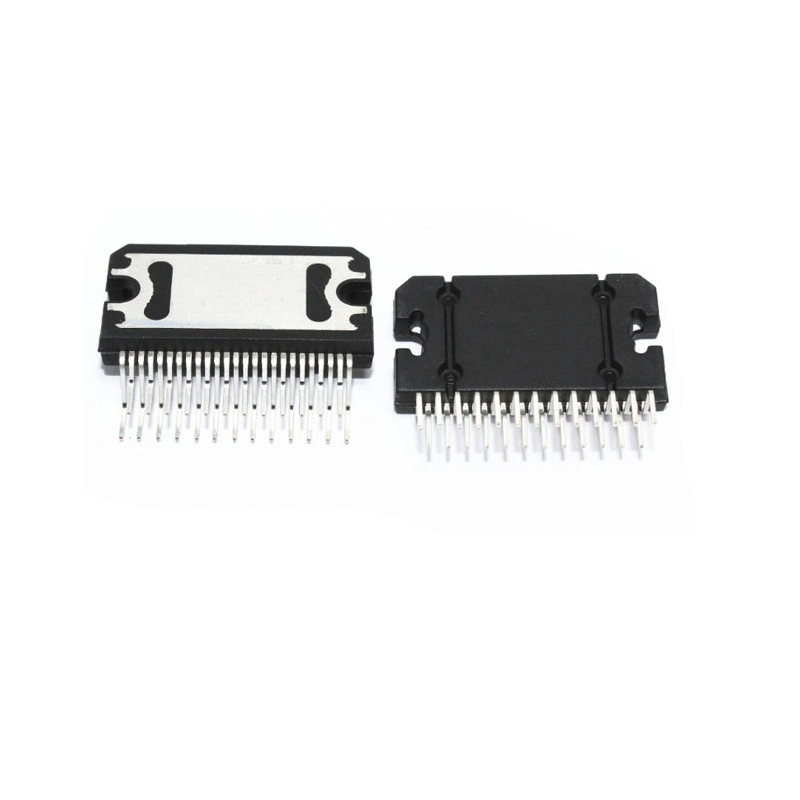
AWM720P1
HONEYWELL
Air Flow Sensor 200 SLPM Male, 0.8661" (22mm) Silicon
-

F38000205
HONEYWELL
Resistive Sensor Linear Position Round Shaft Wire Leads
-

F56103103
HONEYWELL
Resistive Sensor Linear Position Round Shaft Connector
-

POS187414
HONEYWELL
Liquid Level Sensors LIQUID LEVEL
-

103SR18-1
HONEYWELL
Hall Effect Sensor 20mA Latch 5V/9V/12V/15V/18V 3-Pin
Related Parts
-

F38000205
HONEYWELL
Resistive Sensor Linear Position Round Shaft Wire Leads
-

F56103103
HONEYWELL
Resistive Sensor Linear Position Round Shaft Connector
-

02560416-000
MEASUREMENT
Linear Position Sensors
-

HG-S1110
Panasonic
Linear Displacement Sensors High precision, Standard type
-

02560420-000
TE Connectivity
Linear Position Sensors
-

LCP15T-30-5K
ETI Systems
Linear Displacement Sensors 5K 30mm Linear

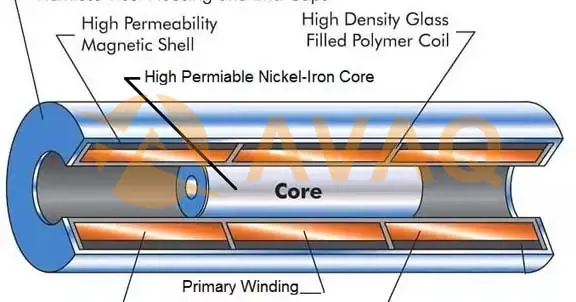
 Update Time: Jul 14, 2023 Consumer Electronics
Update Time: Jul 14, 2023 Consumer Electronics